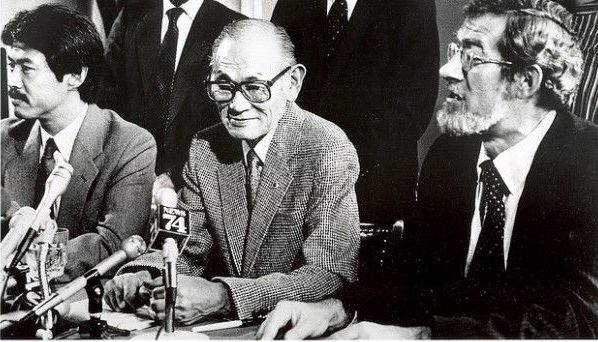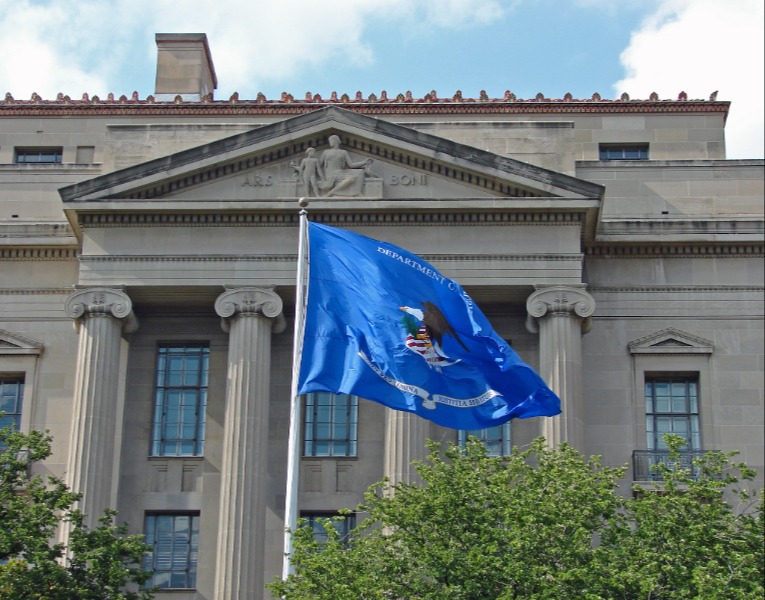The Simple Answer to Judge Paez’s Question about Korematsu
During oral arguments in the Fourth and Ninth Circuits, judges attempted to draw analogies between President Trump's travel ban and Korematsu v. United States (1944).

Published by The Lawfare Institute
in Cooperation With

During oral arguments in the Fourth and Ninth Circuits, judges attempted to draw analogies between President Trump's travel ban and Korematsu v. United States (1944). Judge Richard Paez, for example, asked Solicitor General Wall whether the "Korematsu executive order would pass muster under your test," because it is "facially legitimate." This question, which at first seems to bolster the challengers’ case, in fact supports the government’s defense.
First, the military order that Fred Korematsu violated was not “facially legitimate,” but rather singled out Japanese-American citizens. Second, the standards of constitutional scrutiny for persons inside the United States (citizen or not) are completely different from the rules for non-citizens outside the United States. The Solicitor General may have been reluctant to engage with the so-called anti-canon, but a brief discussion of the case’s specifics illustrates the critical distinctions.
At issue in Korematsu were two relevant documents: Executive Order No. 9066 and Civilian Exclusion Order No. 34. The former, signed by President Roosevelt, was indeed facially neutral and by itself did not result in the exclusion of any Japanese-Americans. It authorized "the appropriate Military Commander [to] determine, from which any or all persons may be excluded," without regard to nationality. But a military order promulgated pursuant to the executive order, Civilian Exclusion Order No. 34, was anything but “facially legitimate.” By its own terms, the order signed by General John L. DeWitt applied to “all persons of Japanese ancestry, both alien and non-alien.” That is, citizens and non-citizens, solely because of their Japanese heritage.
This poster notified Japanese Americans that they were required to be “evacuated” from the San Francisco area pursuant to Civilian Exclusion Order No. 34:

These facts reveal Judge Paez's question to be something of a non-sequitur. The problem in Korematsu was not President Roosevelt’s facially legitimate executive order. The problem arose because the delegees of that "facially legitimate" authority subsequently engaged in what Justice Murphy called in dissent the "ugly abyss of racism."
In response to Judge Paez’s question, the Solicitor General should have responded that the executive actions at issue in Korematsu were not “facially legitimate.” It makes no sense to isolate the executive order by itself. Indeed, as Justice Black’s opinion recounts, Fred T. Korematsu was convicted of violating the facially discriminatory military order. To elide this fact is potentially misleading. For example, the amicus brief prepared by the Fred T. Korematsu Center, which Judge Paez mentioned, only referred to the military order indirectly, stating that Korematsu “was convicted for defying the military’s invocation of the [Executive] Order,” which “did not explicitly refer to Japanese Americans” (emphasis added).
Putting aside these factual issues, Judge Paez's question also conflates the relevant law. Facial neutrality is not dispositive when it comes to the constitutional rights of people within the United States. Going as far back as Yick Wo v. Hopkins (1886), the Supreme Court recognized that facially neutral laws, with impermissible motives, would not survive scrutiny under the Equal Protection Clause of the 14th Amendment:
Though the law itself be fair on its face and impartial in appearance, yet, if it is applied and administered by public authority with an evil eye and an unequal hand, so as practically to make unjust and illegal discriminations between persons in similar circumstances, material to their rights, the denial of equal justice is still within the prohibition of the Constitution (emphasis added).
When I teach Korematsu, a student invariably asks why Yick Wo was not even cited. The simple answer is that in 1944, the Fifth Amendment was not yet seen as embracing the Equal Protection Clause. The Court would not reach that conclusion until Bolling v. Sharpe (1954) a decade later. (Without any explanation about so-called reverse incorporation, Justice Murphy's dissent found the Civilian Exclusion Order No. 34 was an "obvious racial discrimination, [which] deprives all those within its scope of the equal protection of the laws as guaranteed by the Fifth Amendment."). The more complicated answer is that the Court somehow determined that excluding thousands of citizens from their homes, without any hearing or the suspension of habeas corpus, comported with due process of law. Such a holding must be wrong, totally apart from any equal protection violations.
In any event, the law is much different today. When confronted with a facially neutral law that has a disparate impact on Americans (citizens and non-citizens alike) with respect to nationality, courts are permitted to ascertain whether there are impermissible purposes. With that rubric, judges routinely search beyond the four corners of the document to find what Yick Wo called the "evil eye."
But this is not the standard for actions that impact non-citizens outside the United States. Instead, we apply the test set forth in Kleindienst v. Mandel (1972): when assessing the Attorney General's decision to deny admission to a Belgian national, the Court would only determine whether the reason given was "facially legitimate and bona fide." Not even Justice Kennedy's concurring opinion in Kerry v. Din (2015) gets you remotely close to the level of scrutiny applied in domestic equal protection clause cases for nationality-based classifications.
And there is a good reason for this bifurcation of precedents. Many of the executive branch's decisions affecting non-immigrant visa applicants rely on nationality-based classifications. Consider the visa waiver program. The United States allows aliens from certain countries to enter without a visa for up to 90 days. Aliens from these countries are granted this privilege because the perceived risk of overstaying is much less. Take a look at the countries on the list—all are fairly prosperous, and most are in Europe. Spaniards are allowed entry under the visa waiver program, but Mexicans are not. Further, pursuant to a statute signed into law by President Obama, nationals of Iraq, Iran, Syria, and Sudan are not eligible for the visa waiver program—even if they are dual citizens of the United Kingdom. Under domestic law, a colorable argument could be made that this policy has a disparate impact on people from predominantly-Muslim countries in the Middle East (putting aside any claims based on religion). That is (thankfully) not the appropriate constitutional standard. Applying such rigorous scrutiny to foreign policy decisions would wreak havoc on immigration laws. That is why we have the Mandel test.
There are other difficulties with comparing the travel ban to the Japanese exclusion cases during World War II. During Neal Katyal’s argument for Hawaii, he referenced Korematsu’s lesser-known predecessor, Hirabayashi v. United States (1943). As Chief Justice Stone explained, Gordon Hirabayashi, “an American citizen of Japanese ancestry, was convicted in the district court of violating the Act of Congress of March 21, 1942, 56 Stat. 173, which makes it a misdemeanor knowingly to disregard restrictions made applicable by a military commander to persons in a military area prescribed by him as such, all as authorized by an Executive Order of the President.” Specifically, the military commander imposed a curfew on “all persons of Japanese ancestry residing in such an area be within their place of residence daily between the hours of 8:00 p.m. and 6:00 a.m.” Similar to Korematsu, the act of Congress was facially neutral, but the implementation of the statute by the military was facially discriminatory. The Supreme Court unanimously affirmed the conviction.
The facts of Hirabayashi are, like those of Korematsu, totally distinct from the facts of the travel ban case, because the order was not facially neutral, and singled out U.S. citizens based on their nationality. Rather, Katyal raised it for a different purpose. At the end of the argument, he reminded the judges that “this very courthouse [in Seattle], which tried, convicted, and later exonerated Gordon Hirabayashi 44 years ago stands as a physical reminder about what is at stake.” It is unthinkable that he would argue at the United States Supreme Court that “this very court house, which unanimously affirmed Hirabayashi’s conviction is a physical reminder about what is a stake.” So why make the argument here? Katyal knows better than anyone else the specifics of Korematsu and Hirabayashi, and his 2011 confession of error on behalf of the office in his capacity as acting solicitor general was profound and commendable. Here, however, these cases—which were not even cited in Hawaii’s brief—are relevant in only the most nonprecedential way. Much like Lochner v. New York, Korematsu is far too often invoked as a judicial bogeyman that privileges passion over persuasion.
I sincerely hope any draft opinions in the Fourth or Ninth Circuits with citations to Korematsu are cleaned up.





